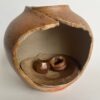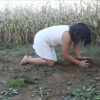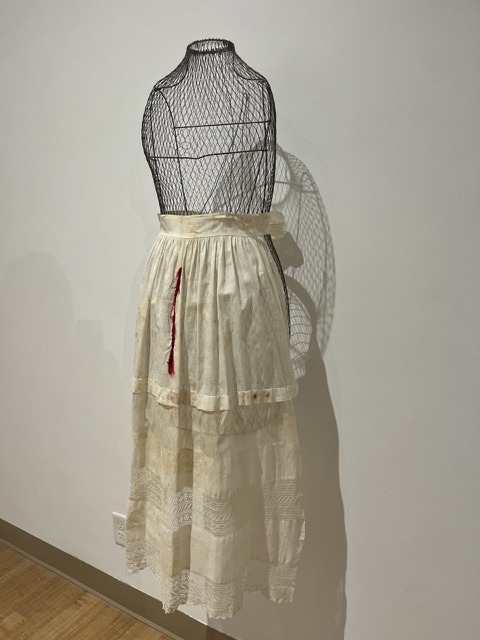ARTIST STATEMENT
I thought my great-grandmother’s apron was not significant or worthy to keep or display because of the many ways it had not been cared for–it was stained, ripped and in need of great repair. I began to reconsider these fragile family threads and use them as sites to remember and feel my own preservation and decay.
The apron became a site for me to cut, rip, tear, and “uncare” in order to better care for self as a radical act of care in my work. My daughter was born under great distress in an emergency cesarean delivery at 25 weeks old–weighing only 1 pound, 11 ounces. Much like this old apron packed into a trunk, I had packed my pain away so I would not retrace or relive the trauma of caregiving as I nurtured my sick child.
I reimagined the scar tissue of my soul in new ways. I measured the length of the scar I still carry on my abdomen from the day I was literally opened into motherhood and caregiving. I laid a large red thread down the fabric and used vintage black thread from my great-grandmother’s sewing basket to stitch traces of the 37 staples that were used to secure my incision. I frayed the red wool in between and in-between the stitches, undoing its edges.
I opened myself one stitch at a time. Finally free, I ran my hand over the fibers, and thought about the ways apron strings can be used for other things.
ABOUT THE ARTIST
Laura Lee McCartney, PhD is a curator, artist, researcher, teacher and mother who currently works as an Assistant Professor of Art Education at Texas Woman’s University. McCartney has worked as a museum curator and has taught elementary, middle and high school art in public schools in North Texas. Her work resides in the tension between caring for objects and ideas with caring for loved ones, visitors, and students. McCartney’s arts-based research uses feminist post-structuralist and performativity theory to allow for unpacking curator and caregiver identity constructions within art education through thick autobiographical narrative–namely remembrance of wounds, of grief, of fragility, of pain. She explores spaces to unravel moments of caring and “uncaring” for the things we hand down as mothers and daughters. McCartney’s work continues to be shaped and opened into caregiving in unexpected, visible and invisible ways when faced with the challenges of her extended care work–working to care for a very sick child. She spent seventy-seven days waiting beside her daughter’s incubator in the neonatal intensive care unit, years managing developmental therapies, and continues to reside in uncertain spaces of clinical trials and life-saving treatments for her daughter. McCartney’s reproductive labor created new spaces to interpret the labors of deep love. Within these spaces of hurt, there are moments to feel and re-find our way. McCartney calls forth opportunities for deconstructing material culture as a means to trouble the practices of caring, collecting, keeping, hoarding, creating, and curating as living curricula and pedagogies within art education.
© Laura Lee McCartney



